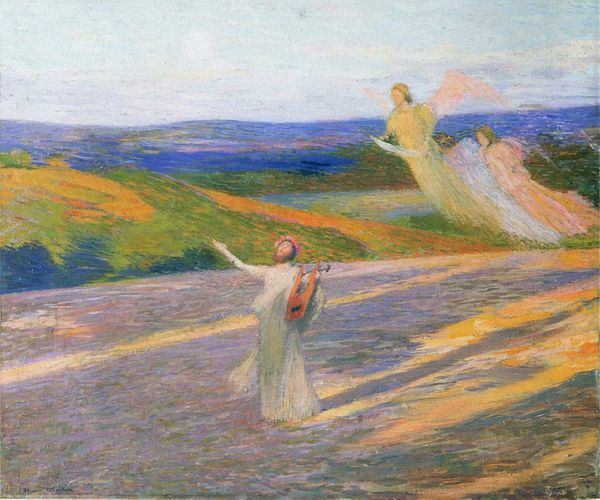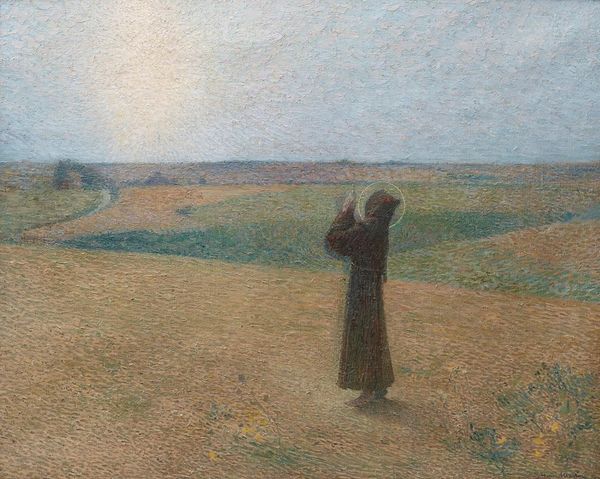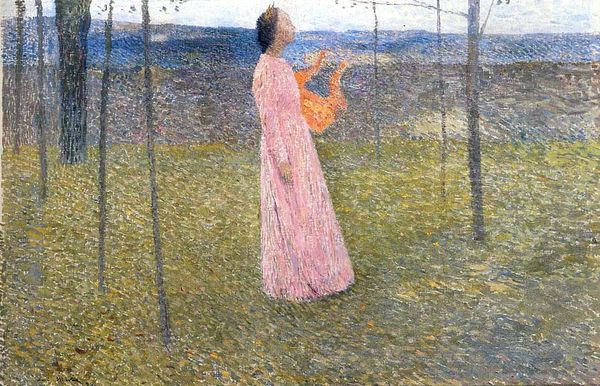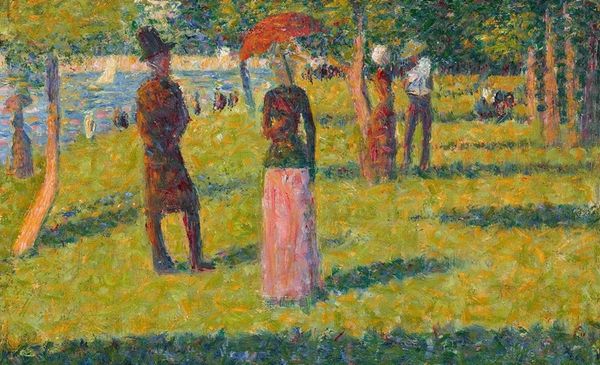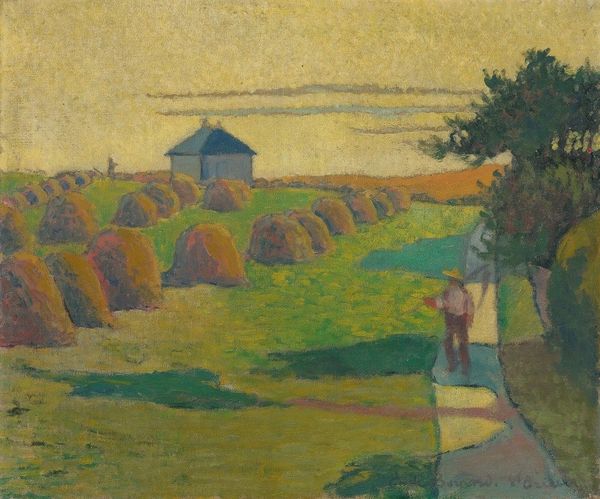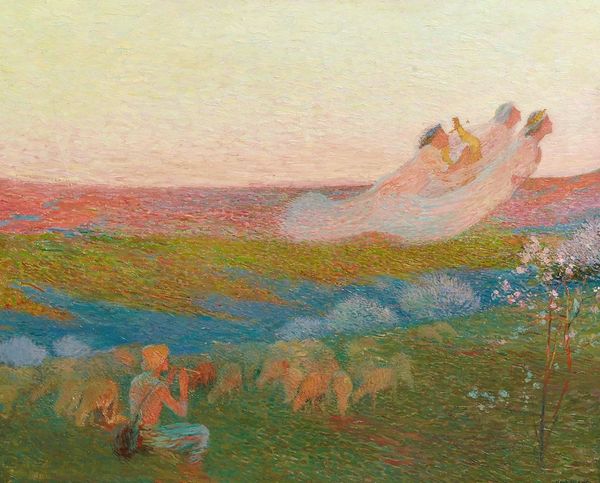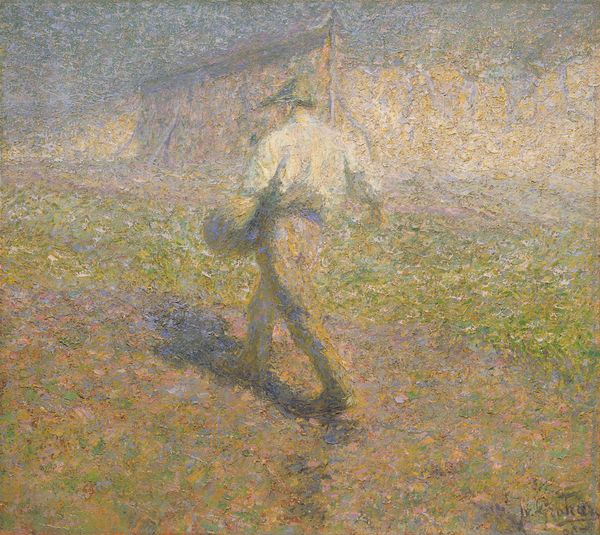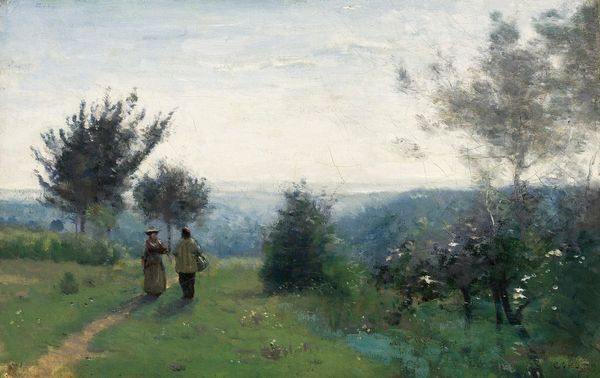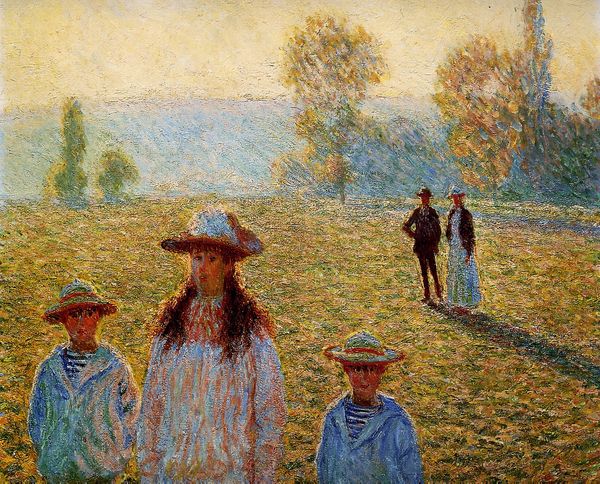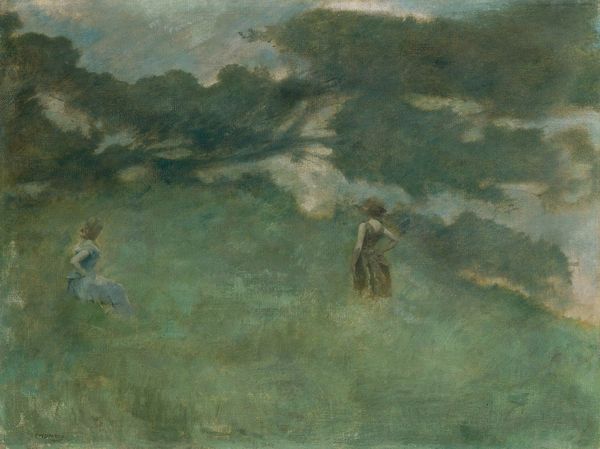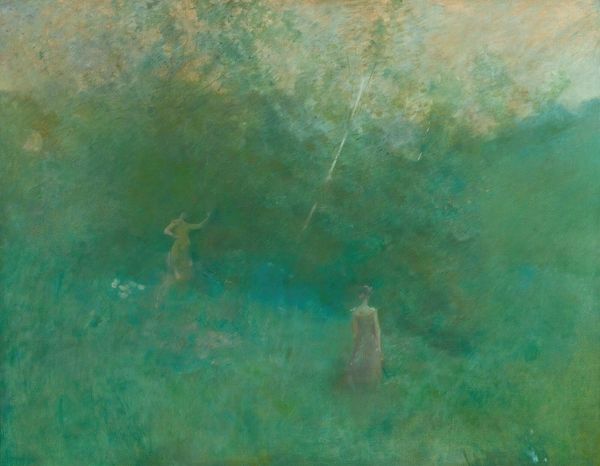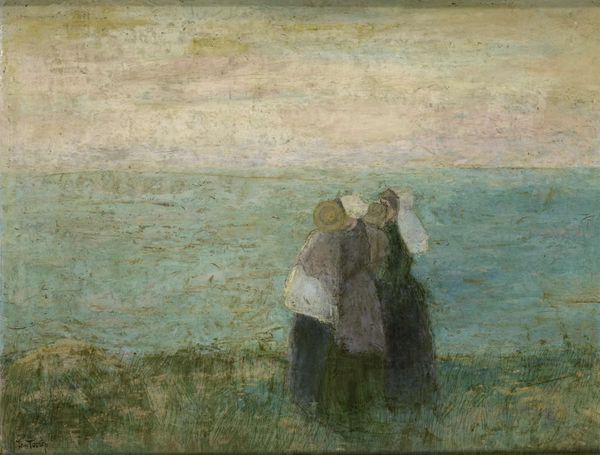
painting, oil-paint
#
painting
#
impressionist painting style
#
oil-paint
#
neo-impressionism
#
landscape
#
impressionist landscape
#
oil painting
#
group-portraits
#
mythology
#
symbolism
Copyright: Public Domain: Artvee
Editor: So this is “Les trois muses,” attributed to Henri Martin, and it appears to be an oil painting. The figures are interesting, but the landscape is really what grabs me. What do you see when you look at this piece? Curator: The materiality speaks volumes here. Notice the visible brushstrokes, the textured surface created by the oil paint itself. It isn't just depicting a landscape, it's *made* of the land, so to speak, in earth-toned pigments. And these aren’t blended perfectly. The labor, the repetitive application of paint, emphasizes the physical act of creation, and points us towards the means of its production and those of other art forms. Do you see what I mean about that connection? Editor: Yes, it feels very tactile, and grounded somehow. Is that common for art of this time? Curator: It depends. The late 19th century saw a breakdown of traditional hierarchies. Think about how industrialization changed artistic production. Mass-produced paints, for instance, became readily available, allowing artists to focus more on application and experimentation. Instead of a perfectly blended surface meant to disguise any trace of making, we see process displayed very actively. How might this change challenge assumptions about what "high art" means to the middle classes and the labor that went into it? Editor: I hadn't considered the effect of those innovations on making art less elite. Curator: Exactly! Now, think about where this would have been displayed. Not just as decoration, but as a signifier of a certain cultural understanding and position in the society of its time. Editor: So by emphasizing the *how* of making art, Martin is challenging the *what* and *who* for whom that art is intended? It changes my view of the landscape, thinking about the means behind it. Curator: Precisely! And those shifts ultimately affected art consumption and patronage as well, making "Les trois muses" much more than just pretty colors. Editor: Thanks, this makes me want to spend a lot more time in the materials section of the art store now.
Comments
No comments
Be the first to comment and join the conversation on the ultimate creative platform.
